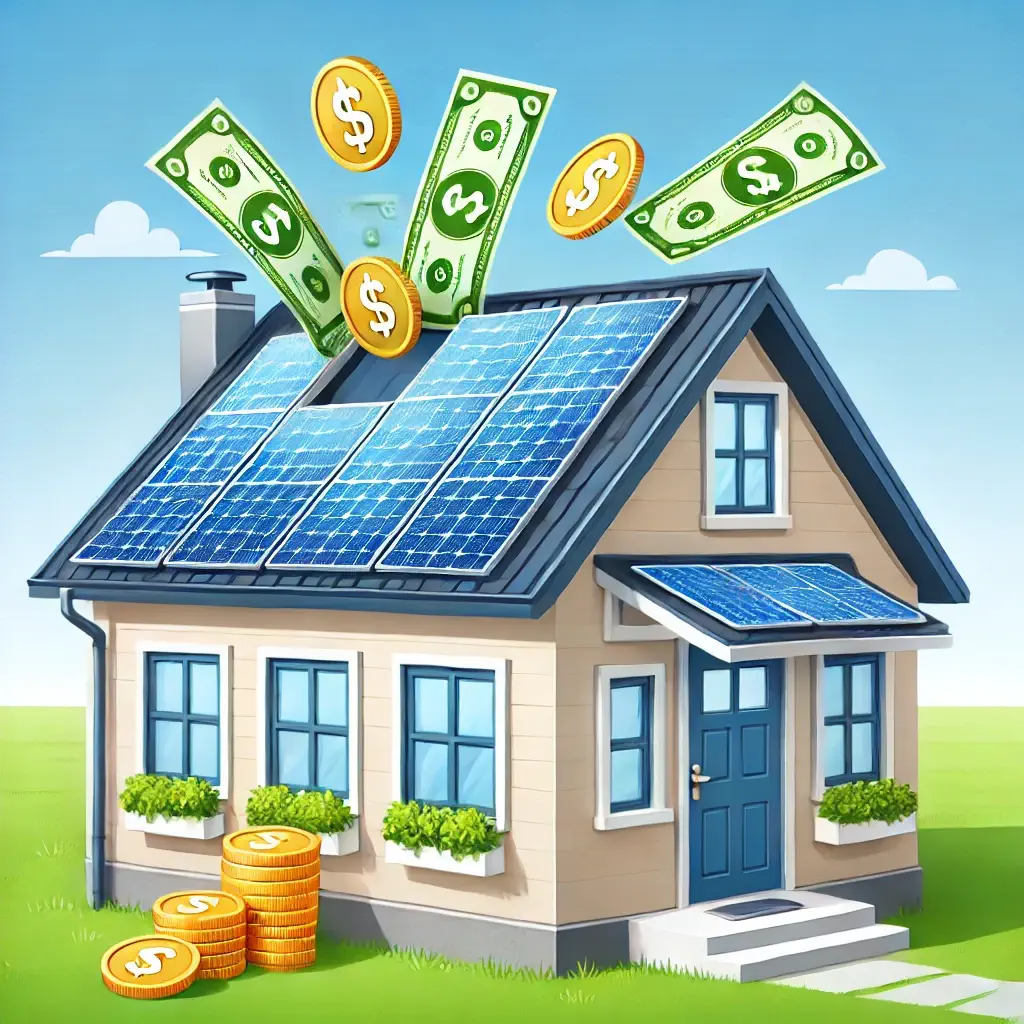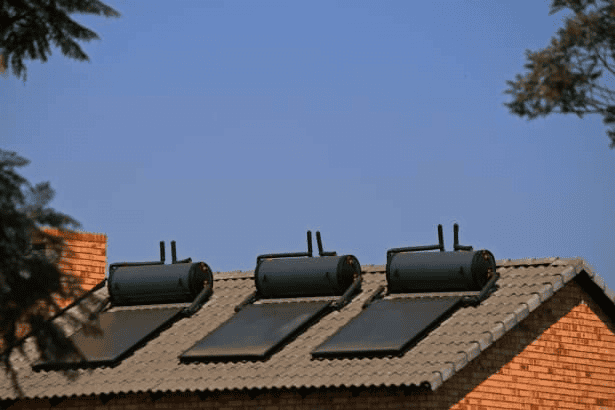Do You Need a Solar Geyser as a South African?
In an era of growing environmental consciousness and ever an ever unreliable Eskom, solar geysers are a beacon of sustainability and efficiency for South African homeowners. Leveraging our abundant sunshine and the power of solar power, solar geysers offer a practical solution to reduce both electricity bills, carbon footprints and fear of another Eskom disaster.
This article explores the benefits, processes, and incentives related to installing a solar geyser, providing a comprehensive guide for anyone considering integrating them into your home.
What is a Solar Geyser?
A solar geyser, or solar water heater, is a system that uses the sun’s energy to heat water, which is then stored in an insulated tank for use when needed. Among the various types of solar collectors, the evacuated tube collector system stands out as the newest and most efficient, designed specifically for conditions where sunlight is scarce and is particularly suitable for cooler climates. This system utilizes UV rays to efficiently heat the water even at lower temperatures. However, given South Africa’s climate, solar geysers can effectively thrive anywhere.
The core components of a solar geyser include the solar collector, which captures and converts sunlight into heat, and the storage tank, where the heated water is kept. In the process, the water circulates through the collector, absorbing solar energy, and is then pumped back into the geyser, either directly in direct systems or indirectly using a heat exchanger and transfer fluid in indirect systems, which are designed to prevent freezing in colder climates. These systems are highly efficient and ensure a continuous supply of hot water.
Solar geysers are particularly suited to South Africa’s climate, offering an effective way to harness the region’s year round solar output. By adopting this technology, homeowners can enjoy hot water throughout the year, even during power outages, provided the sun is shining.
Benefits of Installing a Solar Water Geyser
Energy Cost Savings
Solar geysers can significantly reduce the amount of electricity or gas used for heating water. In South Africa, where electricity prices have been steadily increasing, this can translate into substantial savings on utility bills. Homeowners can expect to save between 30% to 70% on water heating costs, depending on their usage and the type of system installed.
Over time, these savings can offset the initial cost of the solar geyser system. Indeed, the solar geyser is the most effective solution for reducing energy costs in South Africa, making it an attractive investment for those looking to decrease their utility expenses. Low-pressure solar geysers, particularly those using vacuum tube technology, are known for their efficiency in harnessing the sun’s radiation compared to flat-plate technology.

Environmental Impact
Switching to a solar geyser reduces reliance on fossil fuels and decreases greenhouse gas emissions. For those of you environmentally conscious homeowners, this is a crucial step towards sustainable living and let’s be honest even if you’re not so inclined it literally won’t do anything to you but save you money. By using renewable solar energy, a typical household can reduce its carbon footprint by several tonnes annually, contributing significantly to the fight against climate change. In a bid to reduce carbon emissions and the environmental impact of solar power, solar energy is the key to reducing carbon emissions in residential settings, offering a practical and impactful way to protect the environment.
Reliability and Maintenance
Solar geysers are known for their durability and require minimal maintenance once installed. Most systems come with a warranty of up to 10 years, although they can last much longer with proper care. Routine checks and occasional cleaning of solar collector panels ensure optimal performance throughout the year. Regularly checking for leaks, inspecting the condition of the panels, and flushing the system to remove sediment buildup once a year are standard maintenance practices that will extend the geysers life.
Financial Incentives and Rebates
The South African government offers various incentives to promote the adoption of renewable energy technologies, including solar geysers. Homeowners can take advantage of rebates and tax incentives that make the installation of solar geysers more affordable. These financial incentives not only help reduce the upfront cost but also accelerate the return on investment for those who choose to install solar water heating systems. However, these incentives and schemes, like everything else in this country, are subject to sudden change or alteration. The majority of South Africa’s big banks providing loans too.
Installation Process

Installing a solar geyser involves several steps, which should ideally be handled by a certified professional to ensure safety and efficiency. Here’s a brief overview of the installation process:
Assessment: A professional evaluates the home’s suitability for a solar geyser, considering factors such as roof strength, orientation, and exposure to sunlight.
Selection: Based on the assessment, the most appropriate type and size of the solar geyser are selected to meet the household’s needs.
Installation: The system is mounted on the roof, and the plumbing is connected to the home’s water supply. Proper installation ensures that the system captures the maximum amount of solar energy.
Testing: After installation, the system is thoroughly tested to ensure it operates correctly and efficiently.
Cost Analysis
The cost of installing a solar geyser can vary widely depending on the type and size of the system. While the initial investment may seem high, it is important to consider the long-term savings. On average, a solar geyser system pays for itself within 4 to 8 years through reduced energy bills. After this break-even point, all additional savings contribute directly to the homeowner’s pocket.
Questions
1. What are the initial costs and potential return on investment for installing a solar geyser?
The initial cost of installing a solar geyser in South Africa ranges from R15,000 to R30,000, depending on the system size and type. While this upfront investment may seem steep, the potential return on investment (ROI) is substantial. Solar geysers can reduce water heating costs by up to 70%, leading to significant savings on your electricity bill.
2. How do solar geysers perform in cloudy or overcast weather conditions in South Africa?
Solar geysers perform well even in cloudy or overcast weather. They are designed to capture diffuse solar radiation, ensuring some hot water availability even when the sun isn’t shining brightly. Modern systems use advanced materials and good insulation to maximize heat retention. Additionally, most solar geysers come with electric or gas boosters that maintain water temperature when solar energy is insufficient, ensuring a consistent supply of hot water year-round.
3. Are there specific maintenance requirements for solar geysers in different regions of South Africa with varying climates?
Yes, maintenance requirements for solar geysers can vary by region due to differing climate conditions. In coastal areas, regular cleaning of the panels is essential to remove salt and debris that can accumulate and reduce efficiency, hosing down with water that’s gone through a reverse osmosis filter is the best for this. In colder regions like the Drakensberg, ensuring the system is properly insulated to prevent freezing is crucial.

I genuinely believe getting a Solar Geyser will improve your life. Especially now with the loans and incentives that are available to us, we can be leading more sustainable and more reliable lives. It’s a daunting financial step for the majority of South Africans, but I encourage you to investigate more, phone your bank, your local electrician or solar guy and find out. You have every right to the only harm in it is not trying.



